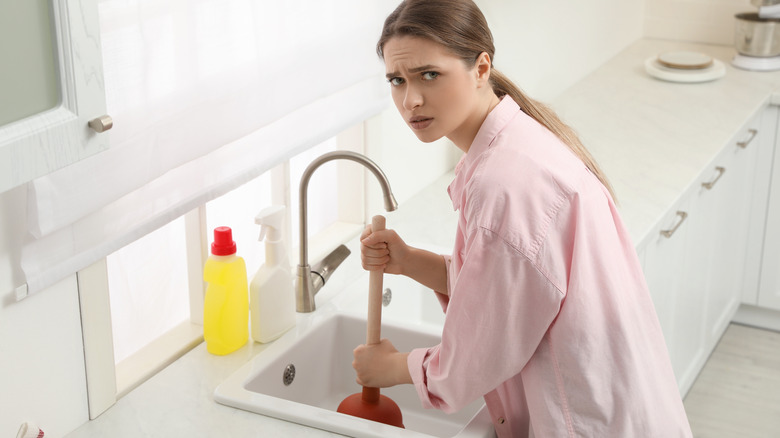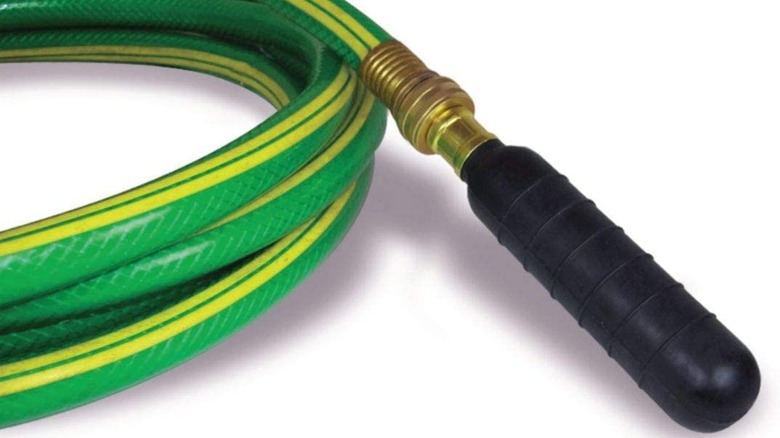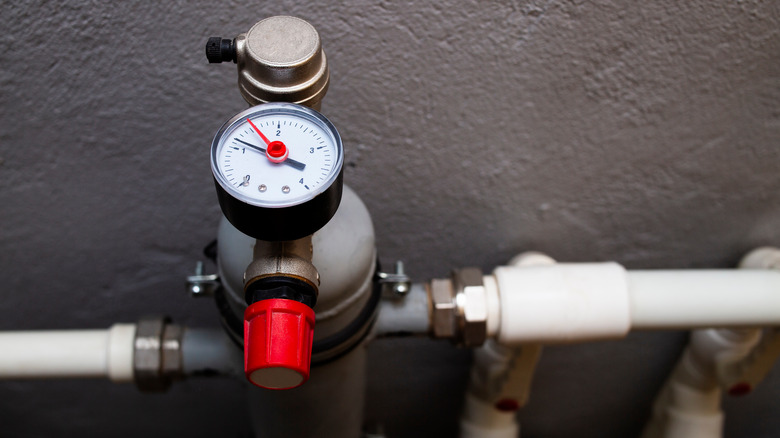How To Use Drain Cleaning Bladders To Clear Clogs
We may receive a commission on purchases made from links.
If you've tried drain snakes, chemicals, plungers, and augers but your sink is still clogged — it might be time to think outside of the box with a drain-cleaning bladder. Don't let the name gross you out; a drain cleaning bladder, also known as a blow bag or pipe bladder, uses water pressure to push out clogs and debris from pipes. While not as widely embraced as more conventional clog removers, you don't need to be a professional plumber to use it. All you have to do is hook it up to a water source, place it into the clogged drainage pipe, and the device does the rest.
At first glance, you may question how such a mundane-looking rubber device with a metal hose fitting could blast away grease, hair, food waste, and soap scum — but, it's all about physics. Once the empty bladder bag fills (picture a heavy-duty water balloon), it becomes a makeshift hydro jet by sending high-pressure streams of water through the pipe via an opening at the end of the bag. The intensity of the water forces the clog down the pipe and out to the sewer line.
Drain cleaning bladder directions
The first step in successfully unclogging a drain with a pipe bladder is selecting the correct size. There are three to choose from: small, which works on 1 and 2-inch pipes; medium, for 1.5-to 3-inch pipes; and large, suitable for 4-to 6-inch pipes. Attach the drain bladder directly to a water source using a garden hose, then insert it into the drain pipe until it comes into contact with the blockage — or as far as it will go without forcing it. For a sink clog, this may require removing the P-trap from the underside of the sink.
With the bag in place, slowly turn on the water and the bladder will begin inflating. A buzzing noise will sound indicating that the bladder is working. As soon as the water pressure builds to capacity, the blow bag will force water out of its hole blasting the clog down the drain. Keep the hose water running through the bag for about five minutes to ensure the clog is fully dissolved and the pipe is clear.
Blow bag removal is straightforward. Simply shut off the water and wait a minute for the bag to deflate, then gently pull it out of the drain and disconnect the hose. If the bag gets stuck, turn it clockwise and gingerly extract it. Don't forget to test the drain by running water from the hose into the drain. Ideally, you won't experience standing water or backflow. If you do, repeat the process.
Important safety tips
While you don't need to be an expert to use a drain-cleaning bladder, it is important to know how to protect yourself and your drains from improper use. For starters, a poor-fitting drain bag can over-expand. This is especially detrimental if you have old pipes which can crack from the high pressure. If you are concerned about the force of the water created by the bladder, consider attaching a water pressure regulator to your hose connection. Likewise, if you are worried about choosing the correct size blow bag, bigger is better. The bladder has to inflate to a size large enough to fill the entire circumference of the pipe in order for it to effectively cut through the blockage.
More importantly, you'll want to prevent personal injuries when operating a drain-cleaning bladder. It is critical that you avoid standing over a drain when a blow bag is in use. Instead, stand to one side of the clogged pipe and wear eye protection in case the bladder bursts and shoots debris out of the drain.


